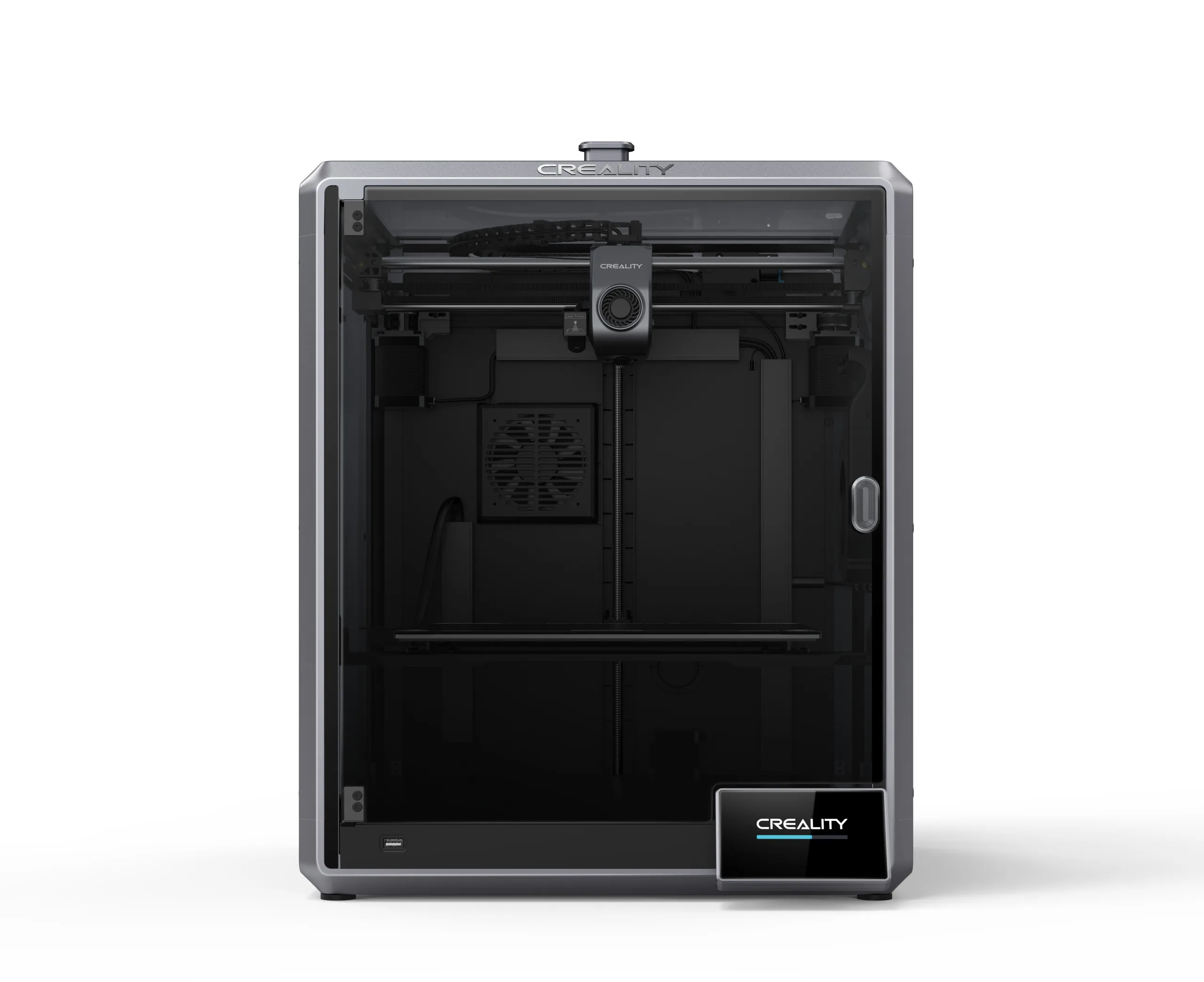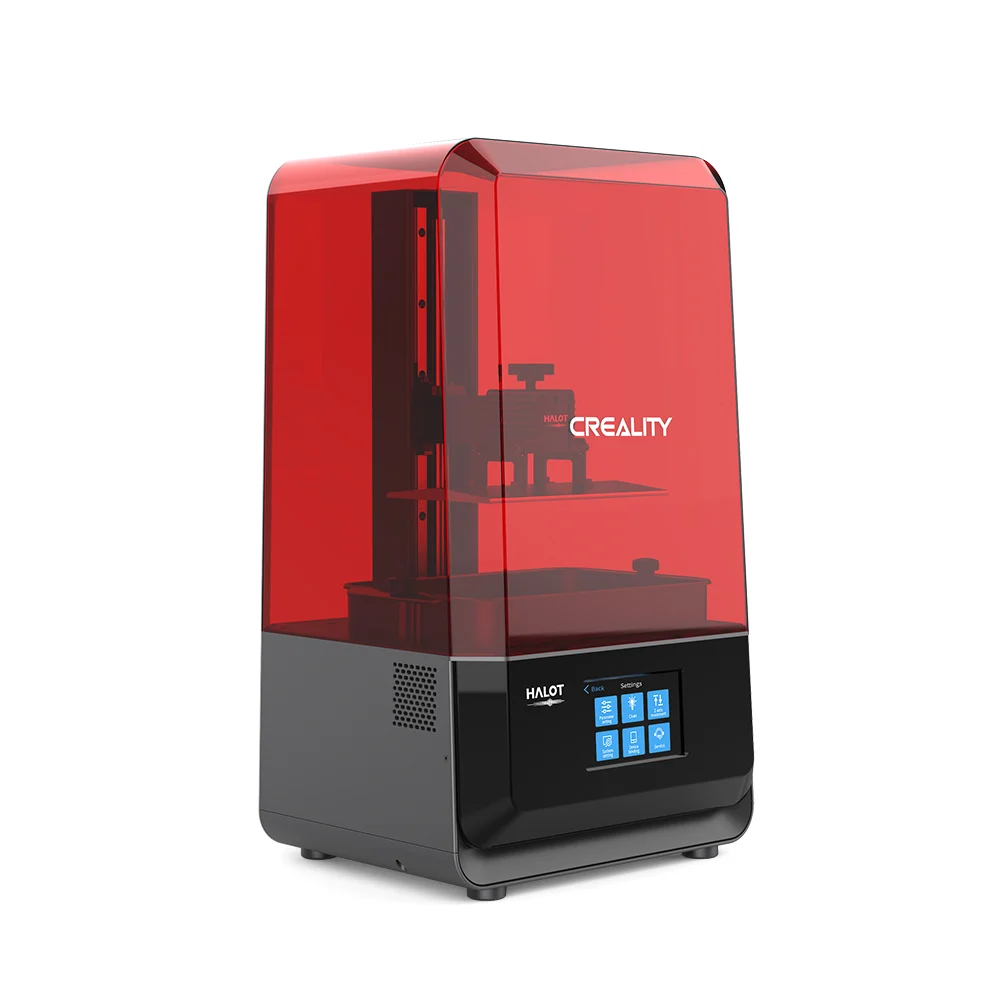Compare K1 Max vs Halot Lite
Comparison between the best 3D printers
Choose the best 3D printer at the best price. The cheapest 3D printers are here.
Buy a 3D printer here with 3D Fila.
 |
 |
|
| Model | K1 Max[BUY K1 Max] |
Halot Lite |
| Printing Material | Filament | Resin |
| Buy Filament for Creality 3D K1 Max | Buy Resin forCreality 3D Halot Lite | |
| Estimated price | $1300,00 | $400,00 |
| Manufacturer | Creality 3D | Creality 3D |
| Release Year | 2023 | 2021 |
| Print Volume [mm] | 300x300x300 | 192x120x200 |
| Printer Size [mm] | 435x462x526 | 330x301x572 |
| Weight [kg] | 18 | 10,6 |
| Power Loss Recovery | YES | NO |
| Maximum Resolution [mm] | 0,1 | 0,01 |
| Processor | ||
| Display | Display touchscreen 4,3'' | Display touchscreen 5'' |
| Power Supply | ||
| Connectivity | USB / Wi-Fi / Ethernet | SD / USB |
| Operating systems | Windows, Mac, Linux | Windows, Mac, Linux |
| Date of registration in the system | 2023-12-01 | 2022-11-04 |
| Release date | 2023 | 2021 |
| Extra features | The Creality K1 Max stands out as a fast Core XY 3D printer with a large build volume of 300 x 300 x 300 mm. It is fully enclosed and equipped with AI sensors to prevent print failures. This model has a smooth and flexible PEI build platform, and uses an automatic leveling system with LIDAR, as well as a filament run-out sensor. LAN, Creality Cloud and USB Flash Disk connectivity are available, as well as a 4.3-inch touchscreen interface. The K1 Max is robust, weighing in at 18 kg, and includes an AI camera and limited version of the Klipper firmware. Its motion system is solid and the printer is efficient with high-temperature filaments, but it is not silent. Assembly is 99% complete, requiring only minor adjustments before use. | Crealitys Halot Lite printer stands out in the mid-size resin 3D printing segment, with a build volume of 192 x 120 x 200 mm and 50 micron resolution. It offers a monochrome LCD for fast and durable printing, and an upgraded light source that ensures over 80% uniformity across the print bed. It includes Wi-Fi connectivity for remote control and updates, an ARM Cortex CPU for efficient performance, and is compatible with Halot Box and Lychee slicing software. It also has an activated carbon filter to reduce odors. |
| Support for multiple colors and materials (AMS and CFS) | NO | NO |
Notes * |
||
| Cost-benefit | 7 / 10 | 8 / 10 |
| Hardware | 4.8 / 10 | 1.2 / 10 |
| Tela | . | . |
| Print volume | 4 / 10 | 3 / 10 |
| Performance | 5 / 10 | 9 / 10 |
| [BUY K1 Max] |
Conclusion |
| In comparing the Creality K1 Max and the Halot Lite, it is evident that both printers cater to different needs and preferences in the 3D printing market. The K1 Max, priced higher, offers significantly larger print volumes and enhanced functionality with features like power loss recovery, an automatic leveling system with LIDAR, and a robust AI camera. Its Core XY technology and high-temperature filament capability make it a powerful choice for serious hobbyists and professionals seeking efficiency and versatility. The inclusion of multiple connectivity options and a touchscreen interface further adds to its appeal, albeit with the trade-off of a higher noise level. On the other hand, the Halot Lite presents itself as a cost-effective solution for those focusing on resin printing. While it has a smaller build volume and lacks advanced features like power loss recovery, it excels in print resolution and features designed for faster, high-quality print outputs. The presence of a monochrome LCD and uniform light source contributes to its strong performance in mid-sized resin prints. Ultimately, choosing between these two models hinges on individual needs and budget considerations. The K1 Max stands out for larger projects and a broader range of materials, making it suitable for ambitious users. Conversely, the Halot Lite offers a robust performance for those seeking affordability and high-resolution capabilities in resin printing. Each printer holds strong value in its category, and potential buyers should weigh their specific requirements against the respective strengths of each model. |

